Items
Site
The Medicine Chest
keywords is exactly
exploration
-
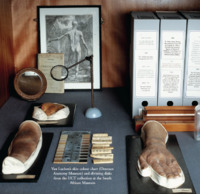
Page 79 of the Curiosity CLXXV catalogue.
"Created by Felix von Luschan, an Austrian doctor, anthropologist, explorer, archaeologist and ethnographer in the early 20th century, the chart, known as the Von Luschan chromatic scale (...) was used to classify skin colour and featured as a tool in race studies and anthropometry of the time. Forgotten by its current department staff and students, its presence draws attention to the role of medicine and science in the apartheid agenda and to the larger racist scientific practices of measuring and classifying human physical differences in the 19th and 20th centuries to produce a ‘typology of race’ (Sturken & Cartwright 2018: 351–352). To support such theories, object collections in scientific university departments worldwide also featured collections of human remains; tools for measuring the size and shape of skulls; and charts detailing various physiognomic features (Sturken & Cartwright 2018: 351 – 352)" (Liebenberg 2021: 122 - 125). -

The Hunting of the Snark
"The Hunting of the Snark offers a timely caution for geographical investigation. The danger, both academic and pragmatic, of enslavement to static conceptual categories, rigid classifications, and established methodological procedures is simply that they tend to rule out the possibility of experiencing that insight and understanding which can be neither discovered, formulated nor communicated by adherence to traditional investigative methdologies. This is not to advocate an un-methodical and irrational geographical philosophy, but rather to suggest that there may be conditions under which slavish adherence to a tried and tested methodology may fail to provide reliable guidance in our search for understanding. A lack of commitment to open-ended investigation could mean that, because our methods are inappropriate, our explorations will forever remain, so to speak, 'snarked' ". -

Ocean Chart
"He had bought a large map representing the sea, Without the least vestige of land: And the crew were much pleased when they found it to be A map they could all understand". -

Whalesharks (Fact/Fiction)
"With a crowd of pilot fish he prowled around the raft, and went on doing this for so long that that we plucked up courage. And when he lay to under the steering oar to scratch his back a bit, we thumped him in return, in a friendly way rather than otherwise, to see how he took it. But he liked it and came back and let himself be thumped three of four times. Then we gave him a bit of a jab with a harpoon, but we ought to not have done that, for he didn't like it and cleared off" (Hesselberg 1950: 48). -
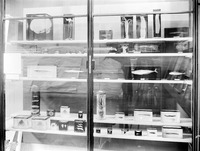
Terra Nova
Robert Falcon Scott’s Terra Nova expedition reached the South Pole on 17 January 1912 — 23 days too late. Inside a small tent supported by a single bamboo flying a Norwegian flag, was a record of the five who had been the first to reach the pole: Roald Amundsen, the leader, and his team - Olav Olavson Bjaaland, Hilmer Hanssen, Sverre H. Hassel and Oscar Wisting. On 19 January, they began their 1,300 kilometre journey home, Scott writing: “I’m afraid the return journey is going to be dreadfully tiring and monotonous” (Scott 1914: 548). -

Fish
A showcase of fish found in the Artic regions. -

Diving the Tacoma Narrows Bridge
"All that debris still remains under the bridge for the most part, and it has become a dive site. It is a very difficult dive site to get to because of the swiftly moving water and the very short period of slack time. Nature in this area has just a tremendous ability to take over. You have a man-made structure like the Tacoma Narrow Bridge that collapsed into the water. Very quickly, the ocean took it over and made it part of the habitat". Extract from the voiceover of trailer for 700 Feet Down (a documentary about the Tacoma Narrows Bridge told through witnesses of the bridge’s 1940 demise as well as intrepid divers exploring a reef of wreckage, ultimately reflecting on how history influences the present) -

A letter to Barrie
My dear Barrie, We are pegging out in a very comfortless spot. Hoping this letter may be found and sent to you, I write a word of farewell.... More practically I want you to help my widow and my boy – your godson. (...) I am not at all afraid of the end, but sad to miss many a humble pleasure which I had planned for the future on our long marches. I may not have proved a great explorer, but we have done the greatest march ever made and come very near to great success. Goodbye, my dear friend. Yours ever, R. Scott. (Excerpt from letter penned by Scott to Barrie on 29 March 1912) -

Echolocation (Part one)
In the spring of 1940, Steinbeck and his very close friend, biologist Ed Ricketts, chartered a boat and embarked on a month long marine specimen-collecting expedition in the Gulf of California, which resulted in their collaboration on a book, 'The Sea of Cortez'. Described as both a travelogue and biological record, it reveals the two men's philosophies: it dwells on the place of humans in the environment, the interconnection between single organisms and the larger ecosystem, and the themes of leaving and returning home. A number of ecological concerns, rare in 1940, are voiced, such as an imagined but horrific vision of the long term damage that the Japanese bottom fishing trawlers are doing to the sea bed. Although written as if it were the journal kept by Steinbeck during the voyage, the book is to some extent a work of fiction: the journals are not Steinbeck's, and his wife, who had accompanied him on the trip, is not mentioned (though at one point Steinbeck slips and mentions the matter of food for seven people). Since returning home is a theme throughout the narrative, the inclusion of his wife, a symbol of home, would have dissipated the effect. Steinbeck and Ricketts are never mentioned by name but are amalgamated into the first person "we" who narrate the log. -

Constellation no. 3
-

On the External Characters of Minerals
"The chest is designed to meet the requirements of travellers, miners, missionaries and others who need a chest of sufficient capacity to take a good supply of medicines without undue bulk and weight. It is very portable, and, on account of the material of which it is made, capable of standing hard usage" (BWC 1934: 24). -
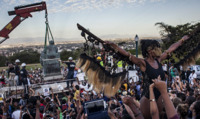
Floyd in Northern Rhodesia
"In 1913, Walter Floyd undertook a hunting trip with a few of his friends to (then) Northern Rhodesia. It was prior to embarking on this trip, that he purchased the No. 254 medicine chest in the Burroughs Wellcome & Co shop in Cape Town. "With the exception of an occasional Portuguese explorer, the area that became known as Rhodesia lay largely untouched by Western intervention until the mid-19th century. It was only after 1851, when the Scottish missionary and explorer David Livingstone entered this terrain, that accounts of it spread to London and further afield (Taylor 2006: 11). However, a significant number of explorers, missionaries and traders began to arrive in the region after the Berlin Conference (1884–1885) (Simson 1985: 7), and in 1890 Cecil John Rhodes, spearheading British imperial interests in the area, secured, through trickery and deception, exclusive mining concessions from the local chiefs for the British South Africa Company (Taylor 2006: 11). By 1895, the area, now renamed Northern and Southern Rhodesia after Rhodes, was proclaimed a British sphere of influence" (Liebenberg 2021: 57) -
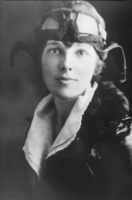
Earhart's pilot license #6017 photo
-
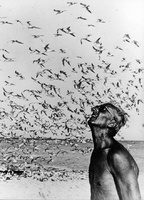
The Sea Birds of Isabella
Aired between 1968 and 1976, 'The Undersea World of Jacques Cousteau' was a documentary television series about underwater marine life. It was directed by Alan Landsburg and hosted by French filmmaker, researcher, and marine explorer Jacques Cousteau. In the 33rd episode of the series, titled 'The Sea Birds of Isabella', the crew journeys off the coast of Mexico to an island to study its tropical birds. Three years after it was shown, Cousteau's son, Phillipe (then aged 38) died trying to land his seaplane, called the Flying Calypso, on the Taos River in Portugal. -

SP-368 Biomedical Results of Apollo
Electrocardiograph signal received at Mission Control during various periods of the Apollo 11 mission -
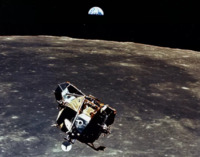
The Eagle has landed (Apollo 11 Lunar Module Ascent Stage Photographed from Command Module)
The Apollo 11 Lunar Module ascent stage, with Astronauts Neil A. Armstrong and Edwin E. Aldrin Jr. aboard, is photographed from the Command and Service Modules (CSM) during rendezvous in lunar orbit. The Lunar Module (LM) was making its docking approach to the CSM. Astronaut Michael Collins remained with the CSM in lunar orbit while the other two crewmen explored the lunar surface. The large, dark-colored area in the background is Smyth's Sea, centered at 85 degrees east longitude and 2 degrees south latitude on the lunar surface (nearside). This view looks west. The Earth rises above the lunar horizon. -

Museum of Natural History Oxford
On a sunny afternoon, July 4th 1862, an Oxford don took out four friends, for a rowing expedition up the Thames. The don was the Oxford mathematician, photographer and storyteller, Charles Dodgeson (better known by his pen name, Lewis Carroll) and his friends were the Rev. Robinson Duckworth and three children – Alice Liddell, aged 10, and her sisters. During the afternoon Dodgeson spun out a series of fantastic yarns incorporating friends and familiar places in Oxford, mathematical riddles, literary allusions and countless references to natural history. -
Tabloid
"The brand name ‘Tabloid’, however, stayed associated with things ‘reduced in size or compressed’ (Larson 2009: 86). It is this reduction in size that made the firm’s drugs perfect for travel, and the medicine chests in particular were designed to this end" (Liebenberg 2021: 45). -
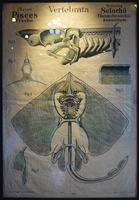
Scientific atlases
"Used from the 18th to the 20th centuries, the scientific atlases provided, for example, simplified, generalised and idealised versions of the objects of anatomy, physiology, botany, palaeontology and astronomy, to name a few, guiding the student and practitioner to what was worth looking at, how it looked and, perhaps most important of all, how it should be looked at (Daston & Galison 2007:23). The establishment and representations of these working sets of objects, and the standardised procedures for studying them, thus extended the initial influence exercised on the individual traveller in the field. By controlling the very act of seeing and by creating a sense of individuals working as members of academic communities, the atlases shaped the subjects and the objects of their disciplines. Processes initiated in the field and reinforced in institutions, societies and museums laid the foundation for procedures still used by the disciplinary insiders of university departments today" (Liebenberg 2021: 111). -

On the External Characters of Minerals
"The chest is designed to meet the requirements of travellers, miners, missionaries and others who need a chest of sufficient capacity to take a good supply of medicines without undue bulk and weight. It is very portable, and, on account of the material of which it is made, capable of standing hard usage" (BWC 1934: 24). -
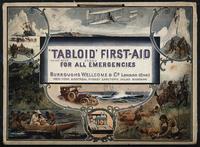
Situations in which a Tabloid medicine chest made by BWC would be useful.
Situations in which a Tabloid medicine chest made by Burroughs Wellcome and Co. would be useful. Colour process print, ca. 1909. The Tabloid medicine chests were distributed free to well known explorers such as H.M Stanley and Ernest Shackleton. The word 'tabloid' was coined by the firm of Burroughs Wellcome and registered as a trademark. -

The Swamp of Sadness
-
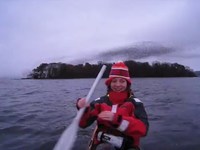
Murmeration
A short film that follows the journey of two girls in a canoe on the River Shannon and how they stumble across one of nature's greatest phenomenons; a murmuration of starlings. -
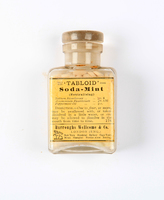
Soda-Mint (Neutralising)
"Antacid, exhilarant and stimulant. From one to three as a neutralising agent, in irritable and acid conditions of the stomach, dyspepsia, flatulence, etc. They may be swallowed with water, or be powdered and dissolved in water and taken as a draught" (BWC 1925:138).


